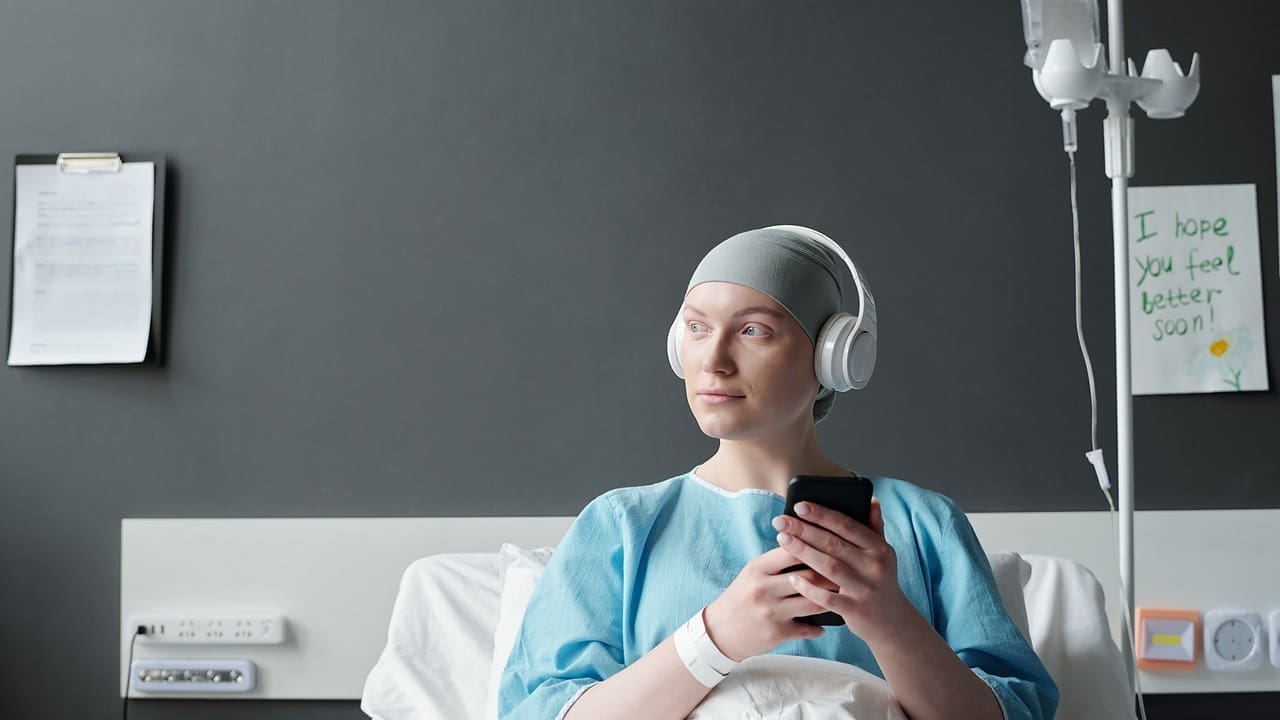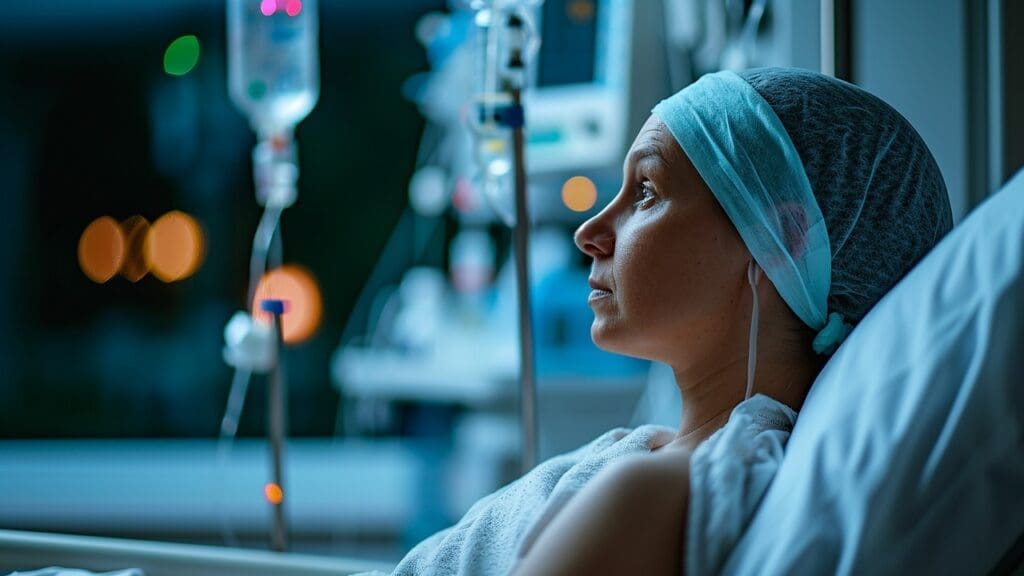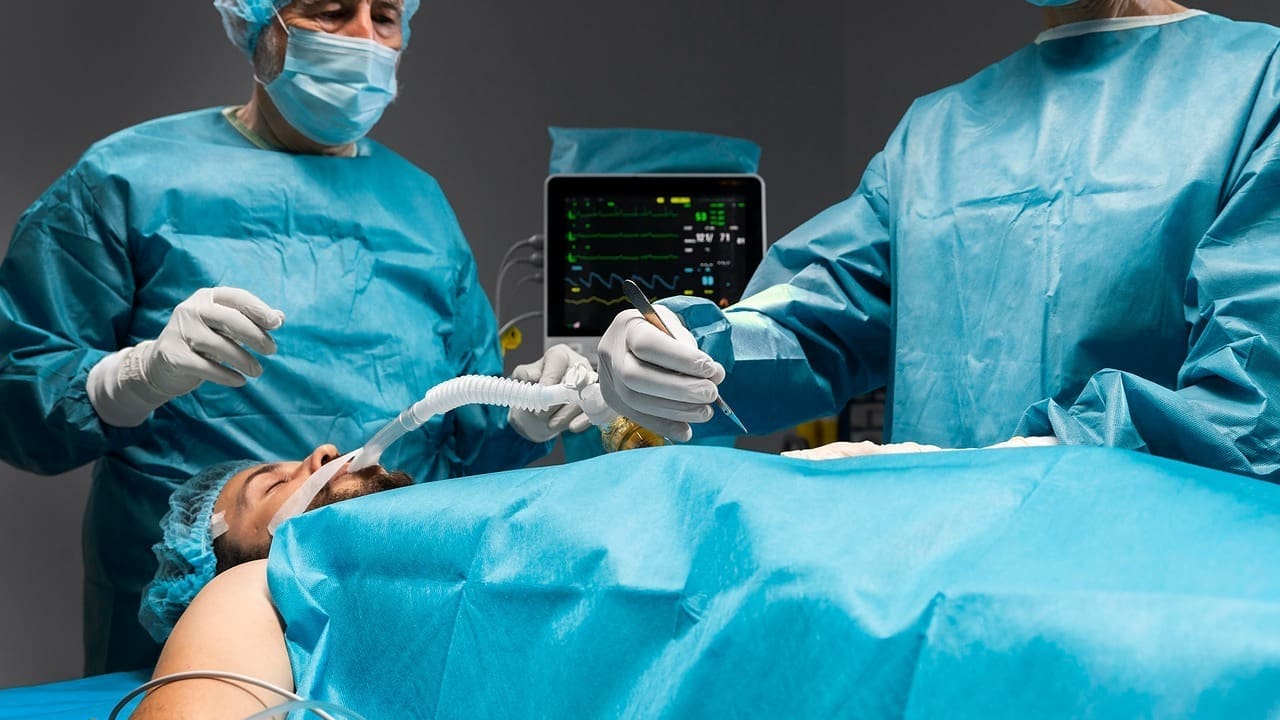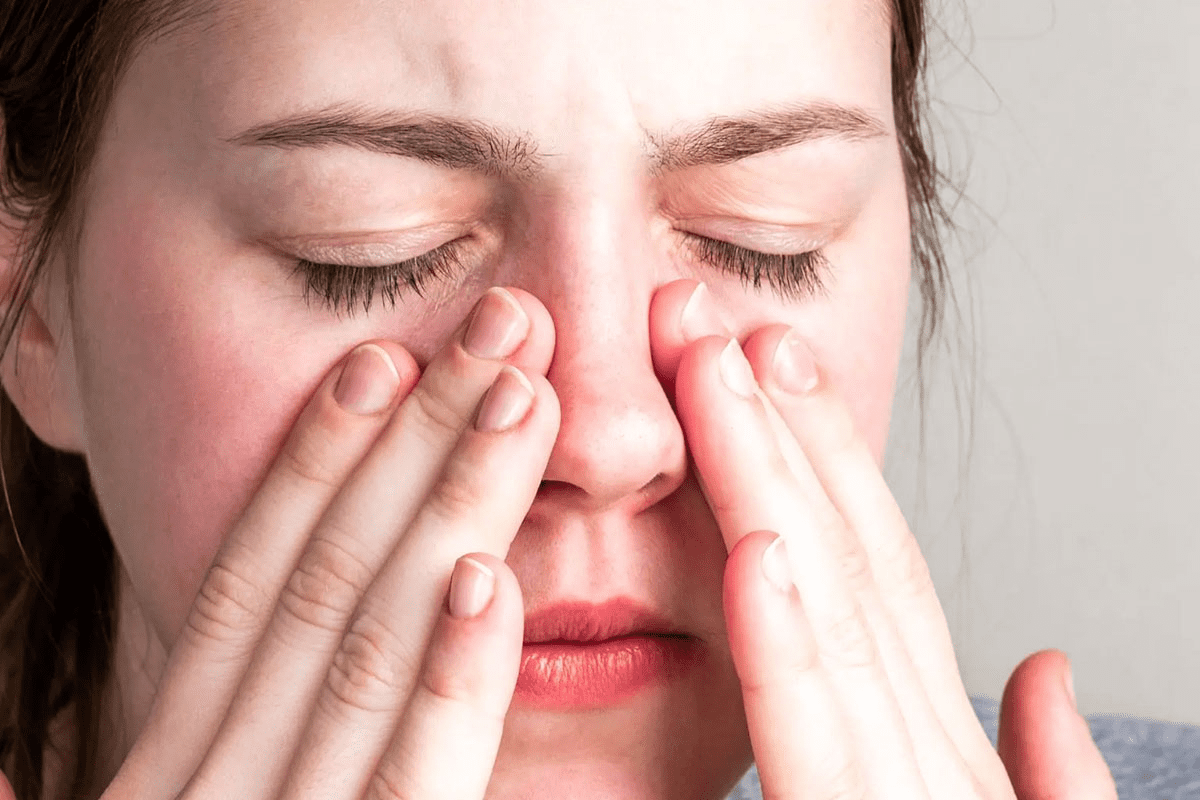Last Updated on November 27, 2025 by Bilal Hasdemir

Patients getting cancer treatment often worry about long-term risks. At Liv Hospital, we tackle these worries head-on. We aim to clear up any confusion about possible risks.
Treatments meant to kill cancer cells can sometimes cause new cancers, like leukemia, later on. Our team is committed to providing personalized care. We support patients every step of the way.
Knowing the risks and benefits of cancer treatments helps us. Together, we can lower the chance of getting secondary cancers. This way, we aim for the best results for our patients.
Key Takeaways
- Cancer treatments like chemotherapy and radiation can have long-term risks.
- Secondary cancers, such as leukemia, can develop years after initial treatment.
- Personalized care and support are key in reducing these risks.
- Liv Hospital is dedicated to top-notch healthcare and full support.
- Understanding treatment risks and benefits is vital for patient care.
The Double-Edged Sword of Cancer Treatments
Chemotherapy and radiation therapy are both lifesavers and have risks. They are key in fighting cancer, helping many patients live longer and better lives.
Life-Saving Therapies with Long-Term Risks
These treatments aim to kill cancer cells. But, they can harm healthy cells too, leading to long-term side effects. A big worry is getting secondary cancers.
Research shows some treatments and radiation can raise the risk of new cancers years later.
What Defines a Secondary Cancer
A secondary cancer is a new cancer in someone who’s had cancer before. It’s not a return of the first cancer. It can happen for many reasons, like genetics, environment, or past treatments.
Knowing the risks of cancer treatments helps make better choices. Healthcare teams can aim to reduce risks while keeping treatments effective.
Can Chemotherapy Cause Cancer? Understanding the Paradox
Chemotherapy is key in fighting cancer but can harm healthy cells too. This can lead to secondary cancers. We’ll look into how this happens and the reasons behind it.
How Chemotherapy Damages Healthy Cells
Chemotherapy targets fast-growing cancer cells. But, it also hits healthy cells that grow quickly. These include cells in the bone marrow, hair follicles, and the gut. This damage can cause side effects and even secondary cancers.
DNA Mutation and Carcinogenesis
Chemotherapy can damage healthy cells’ DNA, causing mutations that might lead to cancer. Carcinogenesis is a complex process. It includes DNA damage, failure in repair, and uncontrolled cell growth.
Cellular Repair Mechanisms
Cells have ways to fix DNA damage. But, if these fail or are overwhelmed, mutations can happen. This can lead to cancer.
Long-Term Cellular Changes
Chemotherapy can change cells in ways that make them more likely to mutate. These changes can sometimes cause secondary cancers, like leukemia.
| Chemotherapy Effect | Short-Term Impact | Long-Term Risk |
|---|---|---|
| DNA Damage | Immediate cell death or repair | Mutations leading to cancer |
| Cellular Repair Mechanisms | Activation of repair pathways | Potential failure leading to mutations |
| Healthy Cell Division | Temporary suppression | Increased risk of secondary cancers |
It’s important to know the risks of chemotherapy. This helps us weigh its benefits against possible long-term harms. By understanding how chemotherapy can cause cancer, we can plan treatments better and ensure follow-up care.
High-Risk Chemotherapy Drugs Linked to Secondary Leukemia
Chemotherapy is a lifesaver but can also increase the risk of secondary cancers, like leukemia. Knowing which drugs carry this risk is key for both patients and doctors.
Alkylating Agents and Their Mechanisms
Alkylating agents are a type of chemotherapy drug linked to secondary leukemia. They work by adding an alkyl group to cancer cells’ DNA, stopping them from copying. But, this can also harm healthy cells’ DNA, leading to cancer.
Cyclophosphamide
Cyclophosphamide is a common alkylating agent. Research shows it raises the risk of secondary leukemia, more so in high doses or with other drugs.
Melphalan
Melphalan is another alkylating agent linked to secondary leukemia. It’s most risky in high doses, leading to myelodysplastic syndromes and acute myeloid leukemia.
Topoisomerase II Inhibitors
Topoisomerase II inhibitors are also linked to secondary leukemia. They block the enzyme topoisomerase II, which is key for DNA replication.
Etoposide
Etoposide is a topoisomerase II inhibitor used against many cancers. It’s been linked to a higher risk of secondary leukemia, mainly acute myeloid leukemia.
Doxorubicin
Doxorubicin is another topoisomerase II inhibitor with a higher risk of secondary leukemia. The risk grows when used with other drugs or at high doses.
| Chemotherapy Drug Class | Specific Drugs | Associated Risk |
|---|---|---|
| Alkylating Agents | Cyclophosphamide, Melphalan | Increased risk of secondary leukemia, including myelodysplastic syndromes and acute myeloid leukemia |
| Topoisomerase II Inhibitors | Etoposide, Doxorubicin | Increased risk of secondary leukemia, mainly acute myeloid leukemia |
Does Chemo Cause Cancer to Get Worse? Dose and Duration Factors
The link between chemotherapy and the risk of secondary cancer is complex. It depends on the dose and how long treatment lasts. Knowing these details helps us reduce risks while keeping treatment effective.
Cumulative Dose Thresholds
Chemotherapy drugs have a point where the risk of secondary cancers goes up a lot. For example, alkylating agents can damage DNA, leading to new cancers. This happens when the total dose goes over certain levels.
Treatment Duration Considerations
How long chemotherapy lasts is also key. Longer treatments mean more time exposed to drugs that might cause cancer. We have to find a balance between treating the cancer well and avoiding long-term risks.
Combination Therapy Risks
Using more than one chemotherapy drug can make treatment better but also raises cancer risk. The mix of drugs can make the risk of causing cancer higher.
Key factors to consider:
- Cumulative dose thresholds for chemotherapy agents
- Duration of chemotherapy treatment
- Risks associated with combination therapy
Understanding these points helps us deal with chemotherapy’s complexities. This way, we can lower the chance of secondary cancers while keeping treatment effective.
Can Radiation Treatment Cause Cancer? Mechanisms Explained
Radiation therapy is key in fighting cancer but can also cause new cancers. We look into how it might lead to secondary malignancies. This is important for making treatments safer.
Ionizing Radiation and Cellular Damage
Ionizing radiation in cancer treatment can harm healthy cells’ DNA. This might cause mutations and cancer. It has enough energy to remove electrons from atoms, creating ions. DNA damage can happen directly or through free radicals.
Targeted vs. Scattered Radiation Effects
Radiation therapy aims to hit cancer cells precisely. But, some radiation can also hit healthy tissues nearby. The body’s reaction to radiation falls into two main types:
- Targeted Radiation: Directly hits the tumor, aiming to destroy cancer cells.
- Scattered Radiation: Affects surrounding tissues, potentially causing damage and increasing the risk of secondary cancers.
Modern Techniques to Minimize Exposure
New methods in radiation therapy aim to protect healthy tissues. These include:
- Intensity-Modulated Radiation Therapy (IMRT)
- Image-Guided Radiation Therapy (IGRT)
- Proton Therapy
Radiation Field Size Considerations
The size of the radiation field is key in cancer risk. Larger fields mean more tissue is exposed, raising the risk. Modern therapy tries to use the smallest field needed to treat the tumor.
It’s vital to understand how radiation therapy can lead to cancer. This knowledge helps in making treatments safer. By balancing benefits and risks, we aim to lower secondary cancer rates.
What Cancers Are Caused by Radiation Therapy?
Radiation therapy is a key treatment for many cancers. But, it can also lead to secondary cancers in some patients. This is a big worry in cancer treatment.
Breast Cancer Following Chest Radiation
Breast cancer is a known risk from radiation therapy, mainly in those who got chest radiation. Young women treated for Hodgkin lymphoma face a higher risk. Their breast tissue is more likely to be damaged by radiation.
Thyroid Cancer After Neck Radiation
Neck radiation, used for head and neck cancers, raises thyroid cancer risk. The thyroid gland is very sensitive to radiation. This is true for children and teens.
Sarcomas in Previously Irradiated Areas
Sarcomas, rare and aggressive tumors, can grow in areas hit by radiation. These tumors are hard to treat and often come back.
Secondary Leukemia from Bone Marrow Exposure
Bone marrow radiation can cause secondary leukemia, like acute myeloid leukemia (AML). The risk goes up with more radiation and some chemotherapy.
Improving radiation therapy is key. We need to understand these risks to treat cancer well without causing more harm.
“The challenge lies in minimizing the risk of secondary cancers while maintaining the efficacy of radiation therapy in treating primary malignancies.”
Most Common Secondary Cancer After Leukemia Treatment
Leukemia survivors might face a higher risk of other cancers. The treatments for leukemia are key to survival but can sometimes cause new cancers. We’ll look at the most common cancers that happen after leukemia treatment.
Myelodysplastic Syndrome Development
Myelodysplastic syndromes (MDS) are disorders where blood cells don’t form right. They can turn into acute myeloid leukemia (AML). People who had chemotherapy, like alkylating agents, are at higher risk for MDS.
Acute Myeloid Leukemia Risk
AML is a big worry as a secondary cancer after leukemia treatment. It’s more common in those who got topoisomerase II inhibitors in their chemo. The risk depends on the type and dose of chemo.
Timeline for Secondary Malignancy Appearance
The time when secondary cancers show up varies. Usually, MDS and AML can happen 2-10 years after the first leukemia treatment. It’s key to keep up with regular check-ups for early detection and care.
Knowing the risks and when secondary cancers might appear helps in caring for patients. We stress the need for long-term follow-up for those who’ve had leukemia.
Patient Risk Factors for Developing Treatment-Related Cancers
Getting secondary cancers after treatment is complex. It depends on many factors specific to the patient. As we work to make cancer treatment better, knowing these risks is key to caring for patients fully.
Age at Treatment as a Critical Factor
How old you are when you get treated is a big risk factor for secondary cancers. Children and adolescents are extra vulnerable. Their bodies are growing, and they have more years ahead, which means more time for treatment effects to show up. For example, kids who get radiation for cancer are more likely to get secondary cancers later.
Genetic Susceptibilities
Genetic factors can greatly affect a patient’s chance of getting secondary cancers from treatment.
DNA Repair Gene Mutations
Changes in DNA repair genes, like BRCA1 and BRCA2, make it harder for the body to fix DNA damage from chemo or radiation. This raises the risk of getting secondary cancers.
Family History Considerations
Having a family history of cancer can also be a risk factor. It might mean there’s a genetic link to getting secondary cancers.
Pre-existing Conditions
Having other health issues can also change a patient’s risk for secondary cancers. For example, people with certain genetic disorders or past exposure to cancer-causing substances might be at higher risk.
A study points out, “The risk of secondary cancers is a big deal in cancer care, even more so for younger patients.” Knowing these risks helps doctors make treatment plans and follow-up care that reduce long-term risks.
Statistics on Second Treatment-Related Malignancies
The risk of second cancers in people who have already had one is a big worry. As treatments get better and more people live longer, knowing about these risks is key.
Prevalence Among Cancer Survivors
Research shows that 1% to 3% of cancer survivors get second cancers. This shows that the risk can vary a lot. It depends on the first cancer, the treatments used, and the person’s health.
Second Cancers as a Proportion of All New Cancer Cases
About 20% of all new cancer cases are second cancers. This number shows how important it is to watch for and manage the risk of second cancers in survivors.
Radiotherapy Attribution in Breast Cancer Survivors
For breast cancer survivors, radiotherapy raises the risk of second cancers by 15%. This highlights the need to weigh the benefits of treatment against the long-term risks.
Monitoring and Early Detection After Cancer Treatment
Monitoring and early detection are key for cancer survivors to avoid or manage new cancers. As we work to improve treatment results, we focus on giving survivors the care they need to stay safe long-term.
Long-term Follow-up Protocols
Long-term care is vital for survivors. We suggest a personalized follow-up plan. This might include regular check-ups, scans, and blood tests. This helps us catch problems early.
A study by the American Cancer Society shows the importance of follow-up care. It notes that some treatments raise the risk of new cancers.
| Follow-up Component | Frequency | Purpose |
|---|---|---|
| Physical Examination | Every 3-6 months | Monitor overall health and detect abnormalities |
| Imaging Tests (e.g., CT scans) | Annually or as needed | Detect possible secondary cancers or treatment side effects |
| Laboratory Tests | Regularly, based on treatment history | Check organ function and find issues early |
Specialized Screening for High-Risk Patients
Some cancer treatments increase the risk of new cancers. We create special screening plans for these patients. We use advanced tests to catch problems early.
“The risk of secondary cancers is a significant concern for survivors of childhood cancer, highlighting the need for lifelong surveillance.”
For those at high risk, we suggest more screenings. This might include:
- Annual mammograms for women who had chest radiation
- Regular thyroid tests for those who had neck radiation
- Periodic bone marrow checks for risk of certain blood cancers
Warning Signs of Secondary Malignancies
Cancer survivors should know the signs of new cancers. These include:
- Unexplained weight loss or tiredness
- New lumps or masses
- Changes in bowel or bladder habits
- Unusual bleeding or discharge
Telling your doctor about these symptoms is key. It helps us act fast.
Balancing Treatment Benefits Against Future Cancer Risks
Choosing cancer treatment is a careful dance between benefits and risks. Oncologists aim to make treatments work well while avoiding future cancers.
Risk-Benefit Analysis in Oncology
A deep risk-benefit analysis is key to picking the right treatment for each patient. We weigh the good of a treatment against its possible downsides, like secondary cancers.
- Looking at how serious the main cancer is
- Checking how well treatments work
- Thinking about each patient’s unique risks
Shared Decision Making Between Doctors and Patients
Shared decision making means doctors and patients work together. It makes sure patients know all about their options, including risks and benefits.
This way, patients can choose what’s best for them, based on their own values and wishes.
Liv Hospital’s Multidisciplinary Approach to Cancer Care
At Liv Hospital, we use a multidisciplinary approach for cancer care. Experts from different fields work together to create detailed treatment plans.
International Standards in Clinical Outcomes
Our treatments follow international standards for the best results. This ensures our patients get top-notch care.
Ethical and Quality Care Values
We stick to the highest ethical and quality care values. Patient safety and happiness are our top priorities.
Our detailed approach helps balance treatment benefits with risks. This way, we aim to give our patients the best results possible.
Conclusion: Advancing Cancer Treatment While Minimizing Secondary Risks
Cancer treatment is complex, with therapies like chemotherapy and radiation being both lifesavers and risk factors. They save many lives but also increase the chance of secondary cancers, like leukemia. Our talk has shown how these treatments can have both good and bad effects.
Some chemotherapy drugs and radiation can harm healthy cells, causing DNA damage and possibly leading to cancer. The risk depends on the treatment’s dose, how long it lasts, the patient’s age, and their genes.
To improve cancer treatment, we need to find a balance. We must understand the risks better and find ways to reduce them. This means following patients closely, screening them regularly, and using a team approach to care, like at Liv Hospital.
This way, we can make sure cancer survivors get the best care. They will have a better life and lower chances of getting cancer from treatment.
FAQ
Can chemotherapy cause cancer or lead to secondary cancers like leukemia?
Chemotherapy is a lifesaving treatment but can damage healthy cells. This might lead to secondary cancers, like leukemia, due to DNA damage.
How does chemotherapy damage healthy cells and potentially cause cancer?
Chemotherapy targets fast-growing cancer cells but can harm healthy cells too. This can cause DNA mutations. These mutations might turn normal cells into cancer cells.
Are certain chemotherapy drugs more likely to cause secondary leukemia?
Yes, some chemotherapy drugs, like alkylating agents and topoisomerase II inhibitors, increase the risk of secondary leukemia. This is because of the DNA damage they cause.
Does the dose and duration of chemotherapy affect the risk of developing secondary cancers?
The risk of secondary cancers after chemotherapy depends on the dose and treatment length. Higher doses and longer treatments increase DNA damage and cancer risk.
Can radiation treatment cause cancer or lead to secondary malignancies?
Radiation therapy can damage cells and lead to DNA mutations, raising the risk of secondary cancers. The risk depends on the dose and area treated.
What are the most common secondary cancers after radiation therapy?
Common secondary cancers after radiation include breast cancer from chest radiation and thyroid cancer from neck radiation. Sarcomas and secondary leukemia are also common.
Are some patients more at risk for developing treatment-related secondary cancers?
Yes, some patients are at higher risk. This includes older patients, those with genetic conditions, and those with pre-existing health issues.
How common are second treatment-related malignancies among cancer survivors?
Second cancers occur in about 1-3% of cancer survivors. Yet, they make up 20% of all new cancer cases. This shows the need for long-term follow-up.
How can the risk of secondary cancers be minimized or detected early?
Long-term follow-up and specialized screening are key. Being aware of secondary cancer signs helps in early detection and treatment.
How do healthcare providers balance the benefits of cancer treatment against the risk of secondary cancers?
At Liv Hospital, we weigh risks and benefits carefully. We work with patients to create treatment plans that reduce secondary cancer risk while treating the main cancer effectively.
References
- American Cancer Society (ACS): https://www.cancer.org/cancer/survivorship/long-term-health-concerns/second-cancers-in-adults/treatment-risks.html
- National Center for Biotechnology Information (NCBI) / PMC: https://pmc.ncbi.nlm.nih.gov/articles/PMC6435077/
- National Center for Biotechnology Information (NCBI) / Bookshelf: https://www.ncbi.nlm.nih.gov/books/NBK13999/
- National Cancer Institute (NCI) / DCEG: https://dceg.cancer.gov/research/what-we-study/second-cancers
- Livestrong Foundation: https://livestrong.org/resources/second-cancers/








